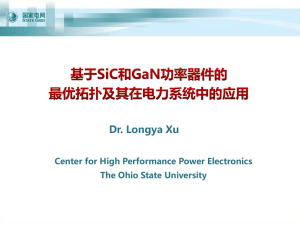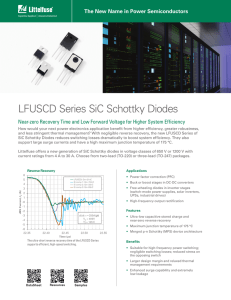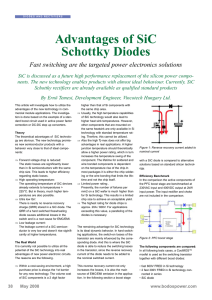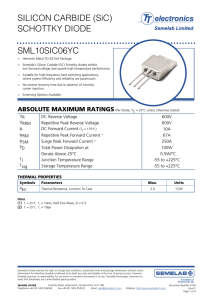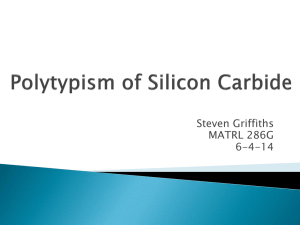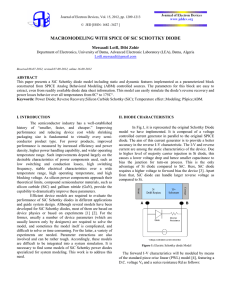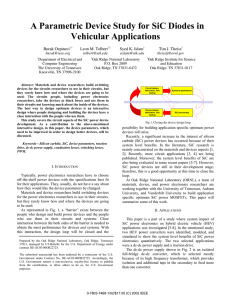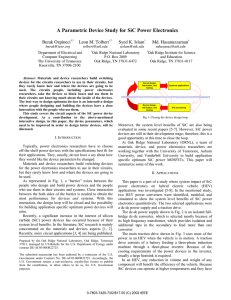Radiation Detector
advertisement
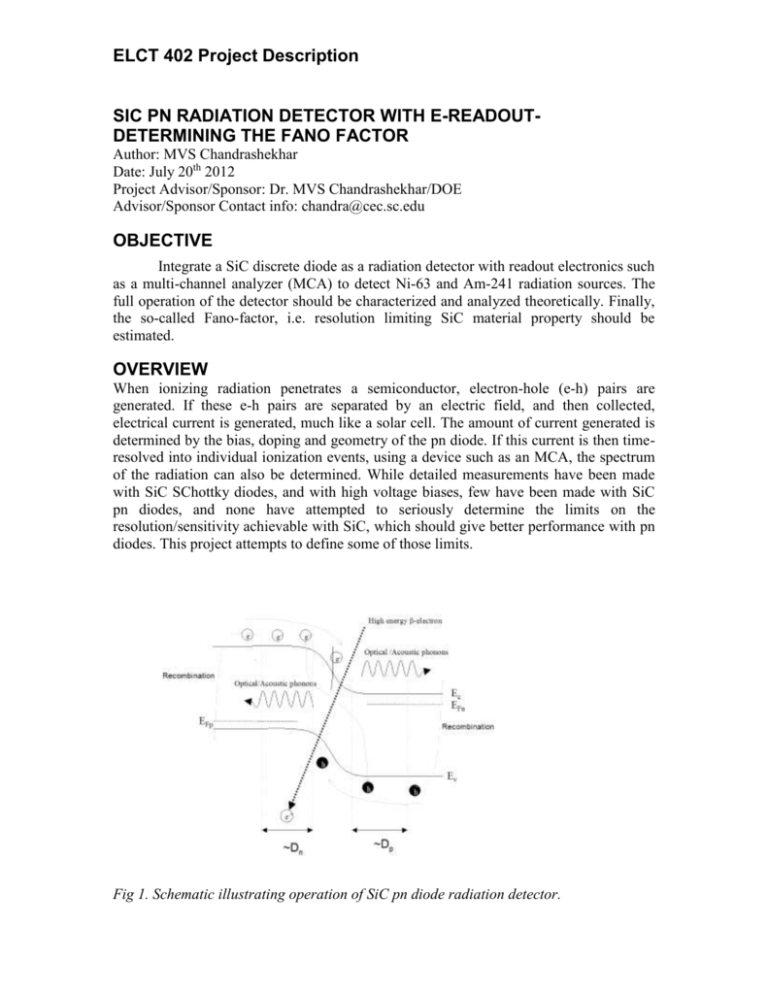
ELCT 402 Project Description SIC PN RADIATION DETECTOR WITH E-READOUTDETERMINING THE FANO FACTOR Author: MVS Chandrashekhar Date: July 20th 2012 Project Advisor/Sponsor: Dr. MVS Chandrashekhar/DOE Advisor/Sponsor Contact info: chandra@cec.sc.edu OBJECTIVE Integrate a SiC discrete diode as a radiation detector with readout electronics such as a multi-channel analyzer (MCA) to detect Ni-63 and Am-241 radiation sources. The full operation of the detector should be characterized and analyzed theoretically. Finally, the so-called Fano-factor, i.e. resolution limiting SiC material property should be estimated. OVERVIEW When ionizing radiation penetrates a semiconductor, electron-hole (e-h) pairs are generated. If these e-h pairs are separated by an electric field, and then collected, electrical current is generated, much like a solar cell. The amount of current generated is determined by the bias, doping and geometry of the pn diode. If this current is then timeresolved into individual ionization events, using a device such as an MCA, the spectrum of the radiation can also be determined. While detailed measurements have been made with SiC SChottky diodes, and with high voltage biases, few have been made with SiC pn diodes, and none have attempted to seriously determine the limits on the resolution/sensitivity achievable with SiC, which should give better performance with pn diodes. This project attempts to define some of those limits. Fig 1. Schematic illustrating operation of SiC pn diode radiation detector. ELCT 402 Project Description REQUIREMENTS Physical configuration similar to Fig 1, with all power, sensing, control components integrated with the end contacts. Design tool that will allow easy determination of optimized SiC diode geometry, depending on the radiation sources that are to be detected, along with required selectivity/sensitivity. Evaluation of the energy resolution of the overall system. MID-PROJECT MILESTONE(S) 1) SiC diode current-voltage (I-V) characteristic measured in the dark and under Ni-63 illumination. This response will be correlated with theory 2) Integration of diode with commercial MCA to measure spectrum of Ni-63. 3) A report detailing the operation of the detector, with particular emphasis on the SiC diode element, along with the factors that determine the measured resolution of the device (the Fano Factor, in particular). This, of course, includes a determination of how the resolution is determined. 4) Design equations that allow determination of device geometries given the detection application. PROJECT POINTERS The diode will be provided by the advisor. Use the following references as a starting point for the design of the device. 1. MVS Chandrashekhar et al, Appl. Phys. Lett., 88, 033506 (2006) 2. F.H. Ruddy et al, IEEE Trans. Nucl. Sci., 53, 1713 (2006) 3. MVS Chandrashekhar, PhD thesis, “Demonstration of a 4H SiC betavoltaic cell”, http://mvschandra.files.wordpress.com/2007/07/thesis_final.pdf

